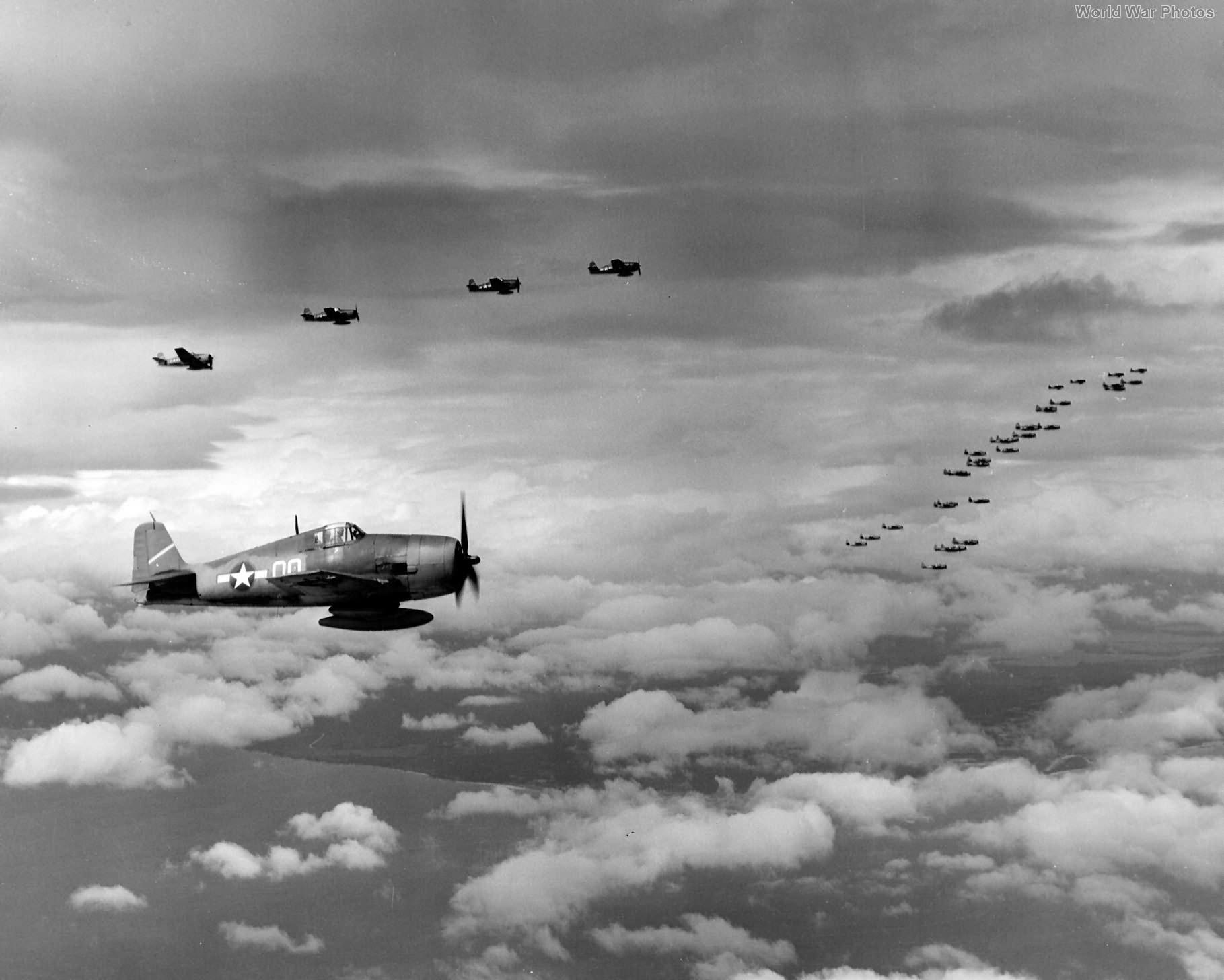During the early stages of World War II, the US Navy’s fighter tactics and formations were rooted in prewar doctrine, which emphasized the three-plane section as the basic element of a fighter squadron. This formation, while beneficial for maintaining visual contact between planes, had several drawbacks, particularly the rigidity of the formation and the limited visibility of the section leader, who had to constantly check on his wingmen instead of focusing on spotting enemy aircraft.
Evolution of Fighter Tactics:
- Prewar Doctrine: The Navy’s original tactic relied on tight V formations of three planes, where the section leader directed all maneuvers, and wingmen were required to stay in close station. This approach worked in an era of limited radio communication, allowing the leader to visually manage his section.
- Challenges: The major disadvantage of the rigid three-plane section was the distraction it created for the section leader, who had to focus on the formation rather than the battlefield. This led to a shift in thinking, as fighter squadrons VF-2 and VF-5 were authorized to experiment with two-plane sections in 1940.
- Two-Plane Sections: The change to two-plane sections improved visibility and reduced the burden on section leaders. By 1941, following the lessons learned from the air wars in Europe and China, the US Navy fully adopted two-plane sections, which provided greater flexibility and coordination.
Lessons from 1942 Carrier Battles:
- The carrier battles of 1942, such as Coral Sea, Midway, and Guadalcanal, revealed critical weaknesses in the Navy’s tactics and doctrine. One of the chief lessons was the urgent need for more fighters. American carriers, fielding only one fighter squadron of approximately 27 aircraft each, often struggled to provide adequate Combat Air Patrols (CAP) and escorts for strike missions. During key moments in battles like Coral Sea and Midway, there were simply not enough fighters to cover all missions, leading to heavy losses for unescorted strike aircraft and insufficient CAP coverage.
- Additionally, air group command-and-control proved to be a significant issue. Despite having early radar systems, the lack of Identify Friend or Foe (IFF) equipment on many aircraft created confusion, leading to friendly planes being misidentified as enemies and CAP fighters being vectored in the wrong direction. This hampered the effectiveness of the fleet’s defense against enemy airstrikes.
Fighter Direction Officers (FDOs):
- A critical role in naval air defense was that of the Fighter Direction Officer (FDO), whose job was to guide CAP fighters to intercept incoming enemy aircraft. Located in the ship’s Combat Information Center (CIC), the FDO relied on radar data to allocate fighters where they were needed most. However, during the 1942 battles, many FDOs were inexperienced, and the radar technology was still being understood. This lack of coordination contributed to the losses suffered in key battles.
Naval Reforms and the Arrival of the Essex-Class Carriers:
- By 1943, the US Navy had learned valuable lessons from the prior year’s engagements, particularly the need for larger, more versatile carrier air groups. The arrival of the Essex-class carriers, starting with USS Essex at the end of 1942, marked the beginning of a new era in naval aviation. These carriers featured improved deck elevators, catapults, and enlarged hangar decks, allowing them to carry and launch more aircraft, including 36 fighters per squadron (double the prewar number).
- The lessons learned from the Guadalcanal campaign also emphasized the importance of close air support for ground forces. The lack of coordination during the initial landings at Guadalcanal hindered efforts to interdict Japanese reinforcements, leading to prolonged fighting. By 1944, naval air support had become better integrated with ground operations, aided by specially trained naval personnel who directed air missions from the ground.
The Kamikaze Threat and “The Big Blue Blanket”:
- As the war progressed, the Japanese adopted kamikaze tactics during the Philippine invasion and subsequent battles. In response, Commander Jimmy Thatch developed the “three strike” system, later nicknamed “The Big Blue Blanket”, which called for continuous air raids over Japanese airfields. By dividing the carrier air group into smaller, faster-to-launch sections, Thatch’s plan ensured that US fighters would maintain pressure on Japanese forces, keeping their planes tied down in defensive operations rather than allowing them to launch strikes on American ships.
- Early warning systems were also crucial to countering the kamikaze threat. The US Navy established CAP patrols over a barrier of picket ships, equipped with radar, stationed 50 miles from the invasion beaches. These picket ships, referred to as “watchdogs”, helped detect incoming enemy planes early, allowing CAP fighters to intercept them before they reached the American fleet.
The US Navy’s fighter tactics and air group operations underwent a significant transformation during World War II. From the rigid, prewar three-plane sections to the more flexible two-plane sections and the innovative “Big Blue Blanket” strategy, the Navy adapted to the evolving challenges of carrier warfare. By 1944–45, the combination of new aircraft, improved carrier designs, and innovative tactics had positioned the US Navy to overcome the kamikaze threat and pave the way for eventual victory in the Pacific.
